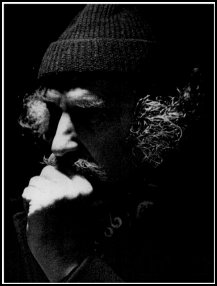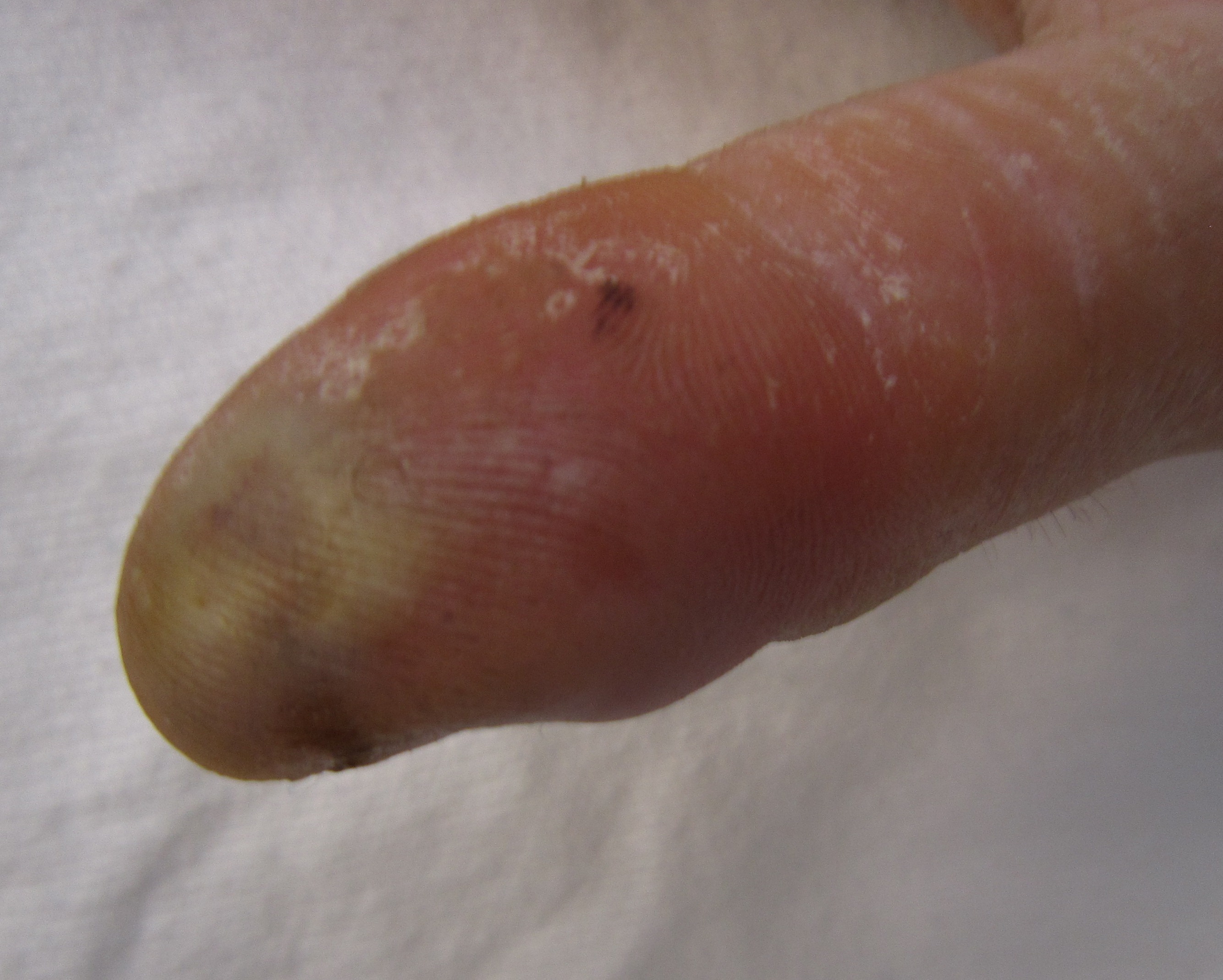|
Karnabo
The Karnabo is a creature of Ardennes folklore. It is reputedly the offspring of a supernatural entity (either a demon or a ghoul) and a Bohemian traveller (sometimes said to be a sorcerer). The Karnabo resembles a man but with an elephant's trunk for a nose and the eyes of a basilisk. The breath of the creature is said to be able to paralyse men and kill animals. It is said to have abducted a young girl and folklore states that her moans and trumpet of the creature can be heard during thunderstorms. Description The Karnabo story is known in the lower Meuse valley in the Franco-Belgian Ardennes. In folklore the Karnabo is described as the sexual offspring of a demon (in other accounts a 67-year-old ghoul) and a Bohemian who travelled across the Ardennes in ancient times. In some accounts the Bohemian was a powerful sorcerer who cast many spells upon the people and animals of the Ardennes. Before leaving the area for good he passed some of his powers onto the Karnabo, inclu ... [...More Info...] [...Related Items...] OR: [Wikipedia] [Google] [Baidu] |
Ardennes
The Ardennes (french: Ardenne ; nl, Ardennen ; german: Ardennen; wa, Årdene ; lb, Ardennen ), also known as the Ardennes Forest or Forest of Ardennes, is a region of extensive forests, rough terrain, rolling hills and ridges primarily in Belgium and Luxembourg, extending into Germany and France. Geologically, the range is a western extension of the Eifel; both were raised during the Givetian age of the Devonian (382.7 to 387.7 million years ago), as were several other named ranges of the same greater range. The Ardennes proper stretches well into Germany and France (lending its name to the Ardennes department and the former Champagne-Ardenne region) and geologically into the Eifel (the eastern extension of the Ardennes Forest into Bitburg-Prüm, Germany); most of it is in the southeast of Wallonia, the southern and more rural part of Belgium (away from the coastal plain but encompassing more than half of the country's total area). The eastern part of the Ardennes forms ... [...More Info...] [...Related Items...] OR: [Wikipedia] [Google] [Baidu] |
Claude Seignolle
Claude Seignolle (25 June 1917 – 13 July 2018) was a French author. His main interests were folklore and archaeology before he turned to fiction. He also wrote under the pseudonyms 'Starcante', 'S. Claude' and 'Jean-Robert Dumoulin'. Early and later life At the age of twelve his family moved to Chatenay-Malabry and he went to school in Lakanal at Sceaux where his history teacher encouraged his interests in archaeology. He was expelled from this school for absenteeism. He later joined the French Prehistoric Society, where he met the renowned folklorist Arnold Van Gennep. With his brother Jacques, Claude toured Hurepoix for two years collecting folklore and legends, and in 1937 he co-wrote with his brother ''The Folklore of Hurepoix'', which was praised by Pierre Mac Orlan and Blaise Cendrars. In 1945 he published his first novel ''Le Rond des sorciers''. He lived in the liberation St. Montaine, still in Sologne, where he collected local folklore and stories that inspired ... [...More Info...] [...Related Items...] OR: [Wikipedia] [Google] [Baidu] |
Mythological Monsters
Myth is a folklore genre consisting of narratives that play a fundamental role in a society, such as foundational tales or origin myths. Since "myth" is widely used to imply that a story is not objectively true, the identification of a narrative as a myth can be highly controversial. Many adherents of religions view their own religions' stories as truth and so object to their characterization as myth, the way they see the stories of other religions. As such, some scholars label all religious narratives "myths" for practical reasons, such as to avoid depreciating any one tradition because cultures interpret each other differently relative to one another. Other scholars avoid using the term "myth" altogether and instead use different terms like "sacred history", "holy story", or simply "history" to avoid placing pejorative overtones on any sacred narrative. Myths are often endorsed by secular and religious authorities and are closely linked to religion or spirituality. Many soc ... [...More Info...] [...Related Items...] OR: [Wikipedia] [Google] [Baidu] |
Givet
Givet () (german: Gibet Walloon: ''Djivet'') is a commune in the Ardennes department in northern France surrounded on three sides by the Belgian border. It lies on the river Meuse where Emperor Charles V built the fortress of Charlemont. It borders the French municipalities of Fromelennes to the east and Rancennes to the south and Foisches to the southeast. Later on, another building was added to the fort, the Caserne Rougé, the longest barracks of France at that time, named after Pierre François, Marquis de Rougé, general of the French armies k.a. 1761. The Pointe de Givet National Nature Reserve is partly located on the commune. History The town's history claims that Saint Hubert lived there in 720 and performed a miracle. The town has changed hands several times since the Roman era before becoming part of France in 1678, and was later invaded by Russians and Germans. During the Napoleonic Wars, the French maintained a camp here for British naval prisoners of wa ... [...More Info...] [...Related Items...] OR: [Wikipedia] [Google] [Baidu] |
Liège
Liège ( , , ; wa, Lîdje ; nl, Luik ; german: Lüttich ) is a major city and municipality of Wallonia and the capital of the Belgian province of Liège. The city is situated in the valley of the Meuse, in the east of Belgium, not far from borders with the Netherlands ( Maastricht is about to the north) and with Germany (Aachen is about north-east). In Liège, the Meuse meets the river Ourthe. The city is part of the ''sillon industriel'', the former industrial backbone of Wallonia. It still is the principal economic and cultural centre of the region. The municipality consists of the following districts: Angleur, , Chênée, , Grivegnée, Jupille-sur-Meuse, Liège, Rocourt, and Wandre. In November 2012, Liège had 198,280 inhabitants. The metropolitan area, including the outer commuter zone, covers an area of 1,879 km2 (725 sq mi) and had a total population of 749,110 on 1 January 2008. [...More Info...] [...Related Items...] OR: [Wikipedia] [Google] [Baidu] |
Revin
Revin () is a commune in the Ardennes department in the Grand Est region in northern France. Revin is situated on the banks of the Meuse. The Revin Pumped Storage Power Plant is near Revin. Population Personalities Yazid Mansouri, the Algeria national football team captain was born in Revin. See also *Communes of the Ardennes department The following is a list of the 449 communes of the Ardennes department of France. The communes cooperate in the following intercommunalities (as of 2020):Former industrial areas in western Europe were hurting even before the economic crisis ', by Paul Ames. ... [...More Info...] [...Related Items...] OR: [Wikipedia] [Google] [Baidu] |
Regniowez
Regniowez is a commune in the Ardennes department in northern France. Geography The Sormonne forms most of the commune's southern border. Couvin and Chimay, two Belgian municipalities, form its northern border. Population See also *Communes of the Ardennes department The following is a list of the 449 communes of the Ardennes department of France. The communes cooperate in the following intercommunalities (as of 2020): Communes of Ardennes (department) [...More Info...] [...Related Items...] OR: [Wikipedia] [Google] [Baidu] |
Demon
A demon is a malevolent supernatural entity. Historically, belief in demons, or stories about demons, occurs in religion, occultism, literature, fiction, mythology, and folklore; as well as in media such as comics, video games, movies, anime, and television series. Belief in demons probably goes back to the Paleolithic age, stemming from humanity's fear of the unknown, the strange and the horrific. ''A Dictionary of Comparative Religion'' edited by S.G.F. Brandon 1970 In ancient Near Eastern religions and in the Abrahamic religions, including early Judaism and ancient-medieval Christian demonology, a demon is considered a harmful spiritual entity which may cause demonic possession, calling for an exorcism. Large portions of Jewish demonology, a key influence on Christianity and Islam, originated from a later form of Zoroastrianism, and was transferred to Judaism during the Persian era. Demons may or may not also be considered to be devils: minions of the D ... [...More Info...] [...Related Items...] OR: [Wikipedia] [Google] [Baidu] |
Good Friday
Good Friday is a Christian holiday commemorating the crucifixion of Jesus and his death at Calvary. It is observed during Holy Week as part of the Paschal Triduum. It is also known as Holy Friday, Great Friday, Great and Holy Friday (also Holy and Great Friday), and Black Friday. Members of many Christian denominations, including the Catholic, Eastern Orthodox, Lutheran, Anglican, Methodist, Oriental Orthodox, United Protestant and some Reformed traditions (including certain Continental Reformed, Presbyterian and Congregationalist churches), observe Good Friday with fasting and church services. In many Catholic, Lutheran, Anglican and Methodist churches, the Service of the Great Three Hours' Agony is held from noon until 3 pm, the time duration that the Bible records as darkness covering the land to Jesus' sacrificial death on the cross. Communicants of the Moravian Church have a Good Friday tradition of cleaning gravestones in Moravian cemeteries. The date o ... [...More Info...] [...Related Items...] OR: [Wikipedia] [Google] [Baidu] |
Whitlow
A whitlow or felon is an infection of the tip of the finger A finger is a limb of the body and a type of digit, an organ of manipulation and sensation found in the hands of most of the Tetrapods, so also with humans and other primates. Most land vertebrates have five fingers (Pentadactyly). Chambers 1 .... Herpetic whitlow and melanotic whitlow (subungual melanoma) are subtypes that are not synonymous with the term ''felon''. A felon is an "extremely painful abscess on the palmar aspect of the fingertip".Dorland's Medical Dictionary: 29th Edition. Whitlow usually refers to herpetic whitlow, though it can also refer to melanotic whitlow (subungual melanoma), which somewhat resembles acral lentiginous melanoma. The terms ''whitlow'' and ''felon'' are also sometimes misapplied to paronychia, which is an infection of the tissue at the side or base of the nail. Felon presents with a throbbing pain, clinically. Notes References Occupational diseases Conditions of ... [...More Info...] [...Related Items...] OR: [Wikipedia] [Google] [Baidu] |






